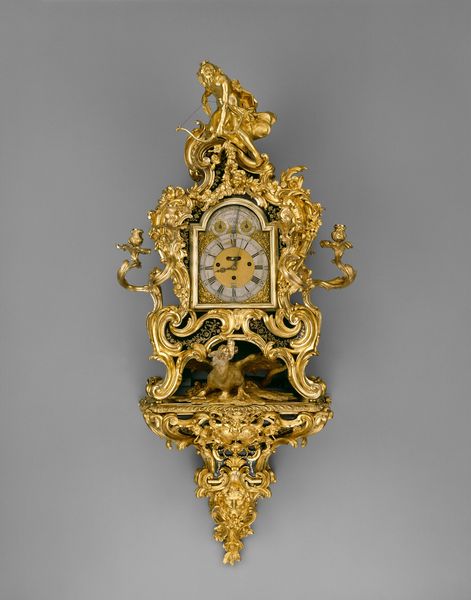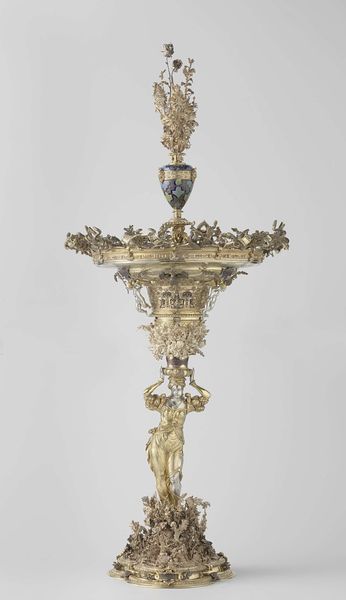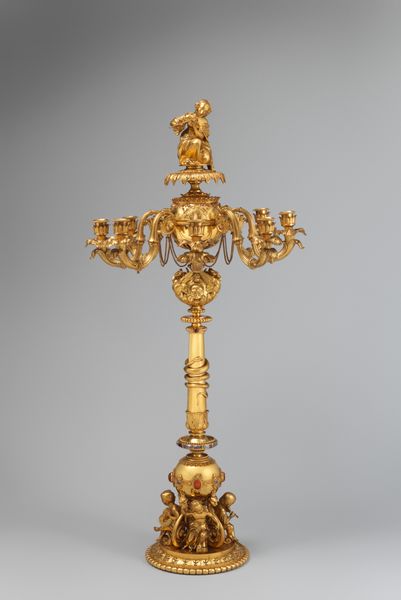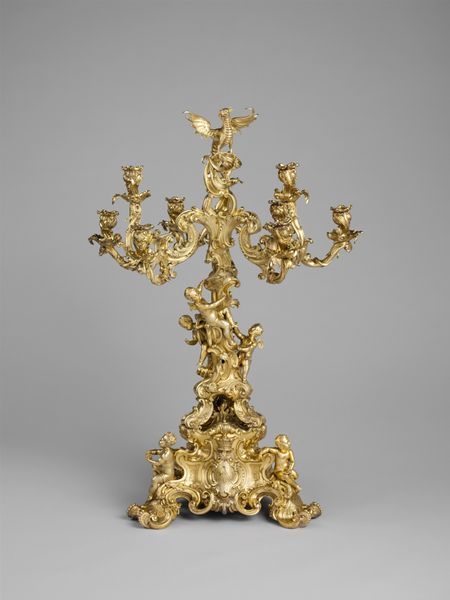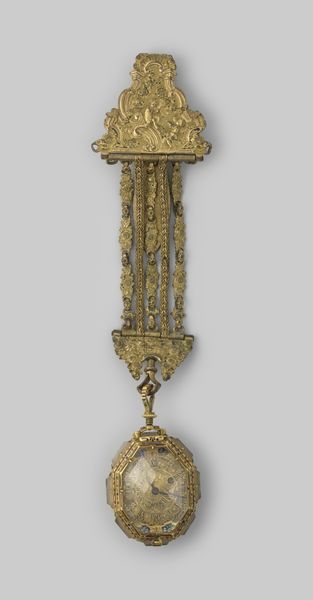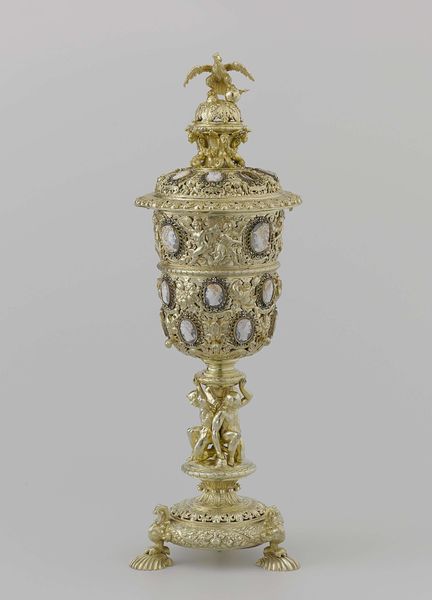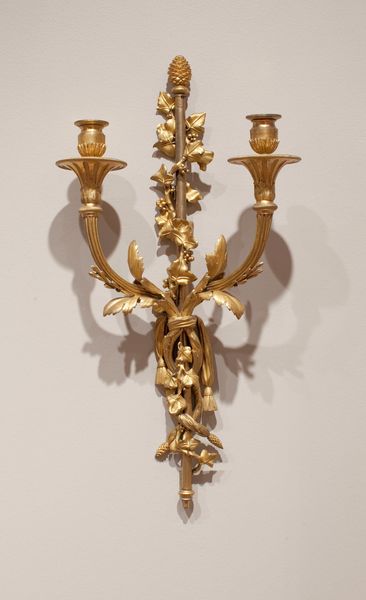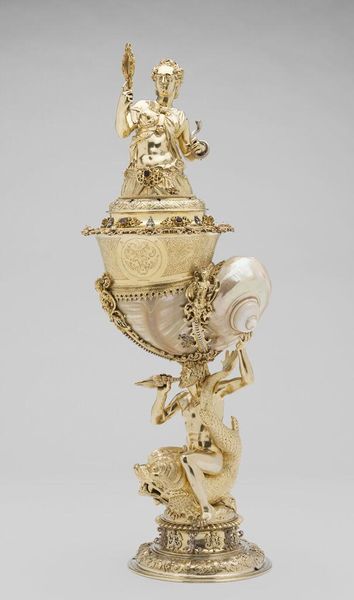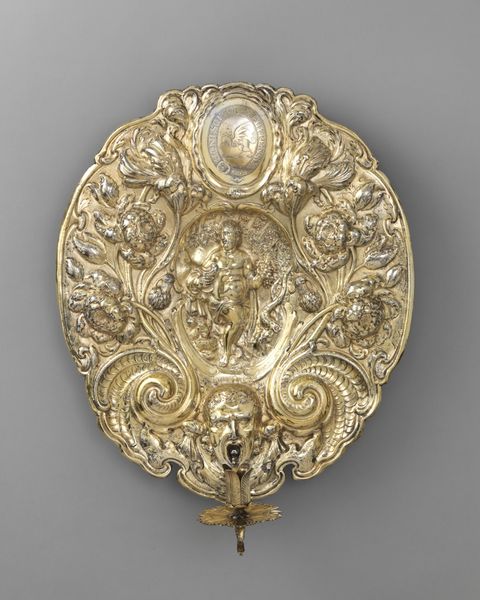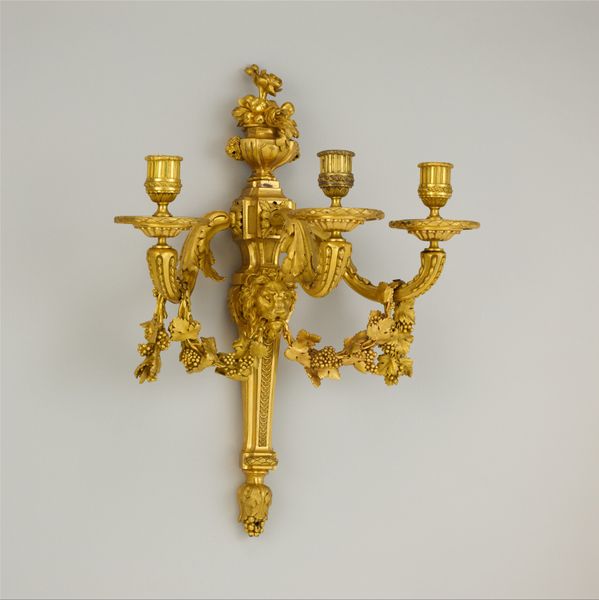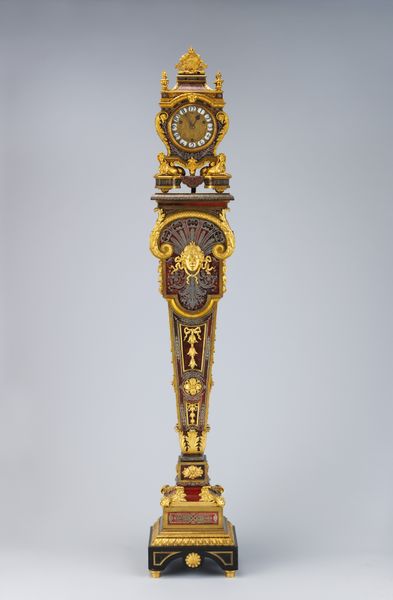
metal, gold, sculpture
#
baroque
#
metal
#
gold
#
figuration
#
sculpture
Dimensions: height 69.0 cm, width 32.5 cm, length 19.8 cm, width 4.9 cm
Copyright: Rijks Museum: Open Domain
This monstrance from the De Toren clandestine church is made from gilded silver, likely during a period of religious suppression. The material itself speaks volumes. The gleam of gold evokes holiness, and the preciousness of silver underscores the value placed on the sacrament it would have held. But consider also the labor involved. The silversmith would have needed to be highly skilled, capable of hammering, chasing, and soldering the metal into these elaborate forms. The many cherubic figures, and radiant sunburst, demonstrate not just technical mastery but also the cultural richness of the era. The monstrance's very existence points to a history of resistance. It embodies a defiance of authority, a refusal to relinquish religious practice even when forced underground. So, when you look at this object, don't just see a beautiful religious artifact. See also the hands that shaped it, the beliefs that inspired it, and the social context that gave it meaning. The history of craft is, in the end, a history of human resilience.
Comments
rijksmuseum about 2 years ago
⋮
Roman Catholics believe that the consecrated bread is literally the body of Christ. The Host thus became an object of veneration, and containers were made in which to keep or display it to the faithful. The monstrance (from the Latin word for ‘to show’) is the most important of all of the Host containers, as is underscored by its sculptural design and the precious materials used to make it.
Join the conversation
Join millions of artists and users on Artera today and experience the ultimate creative platform.
